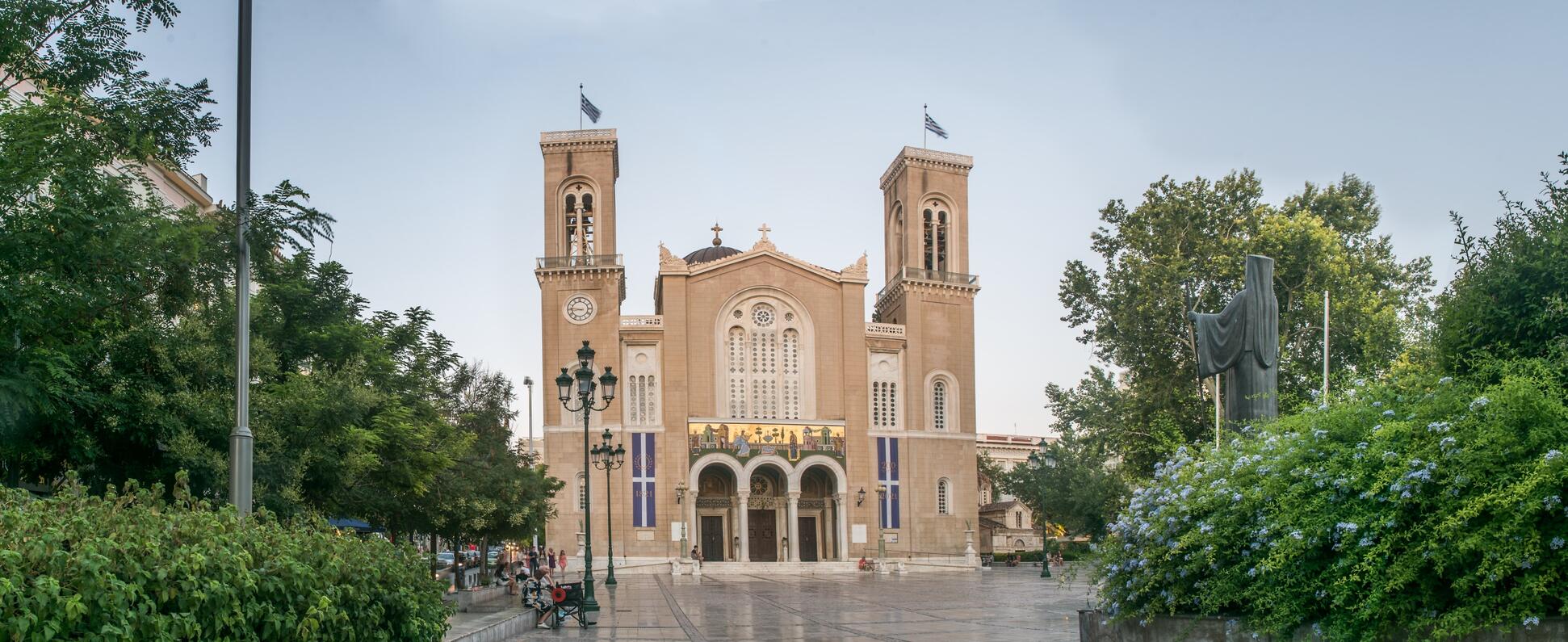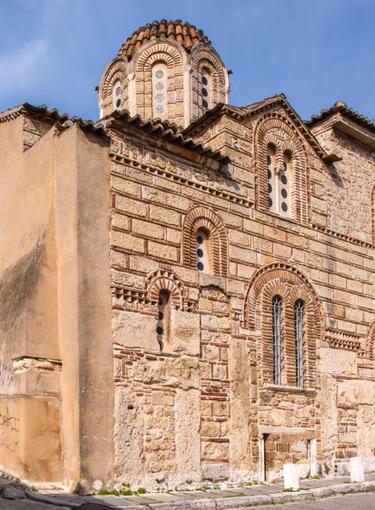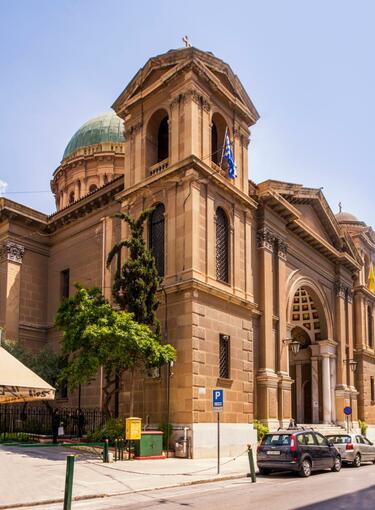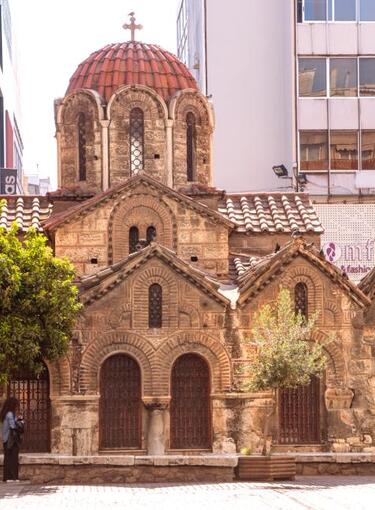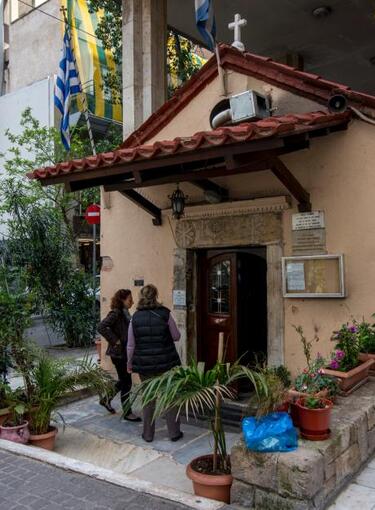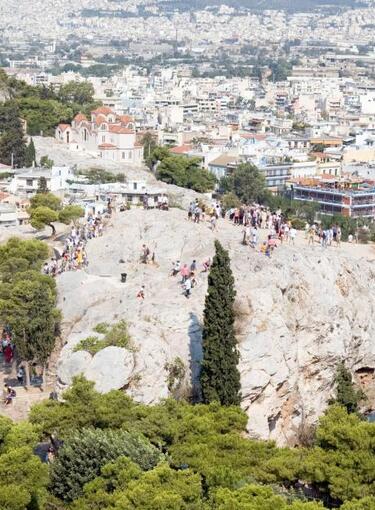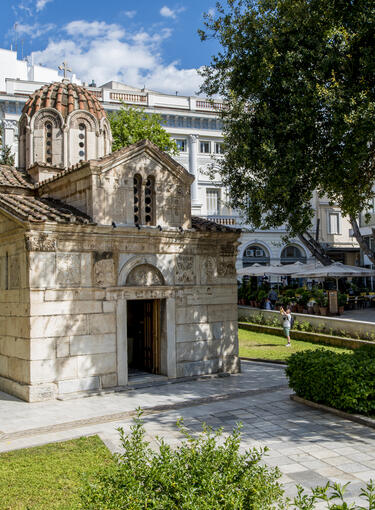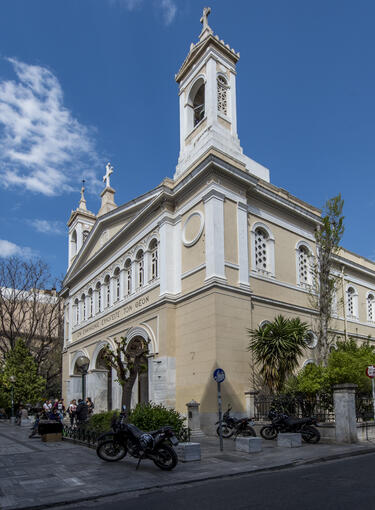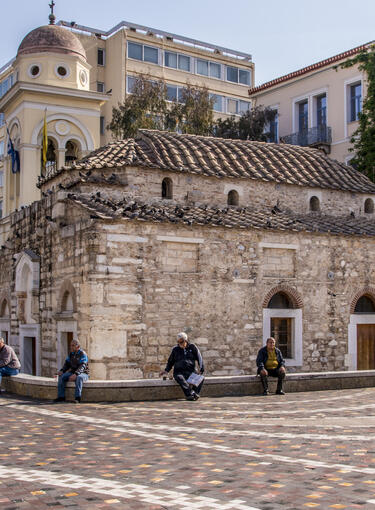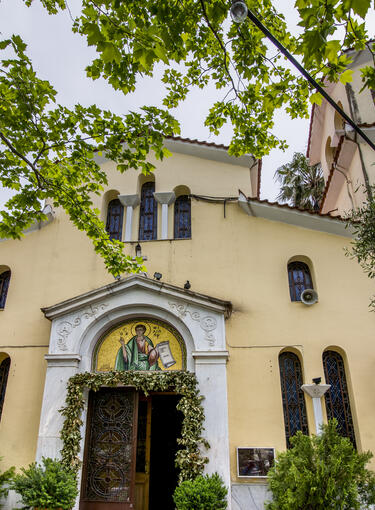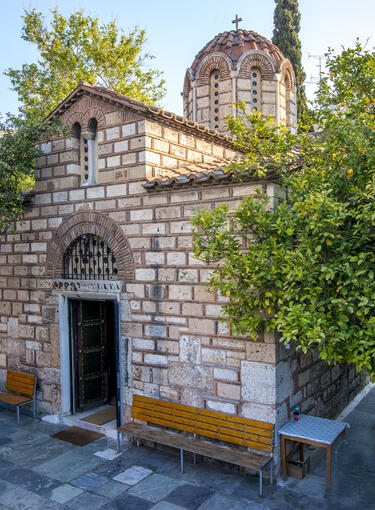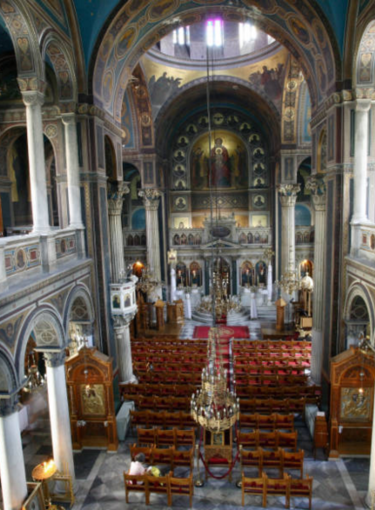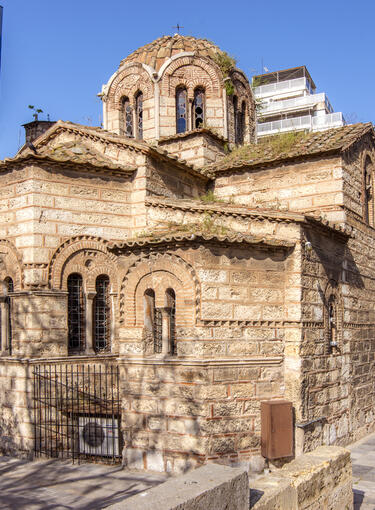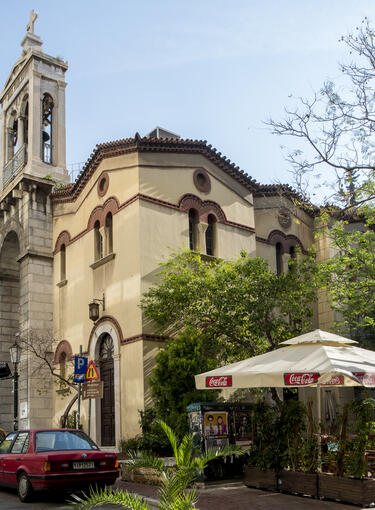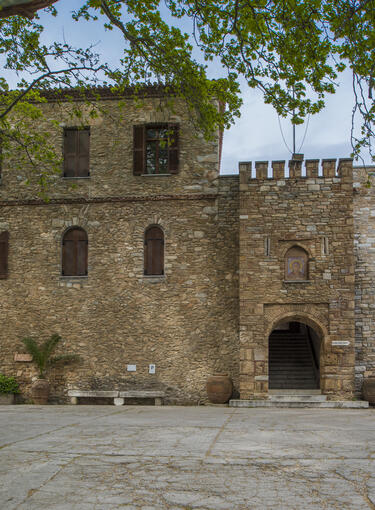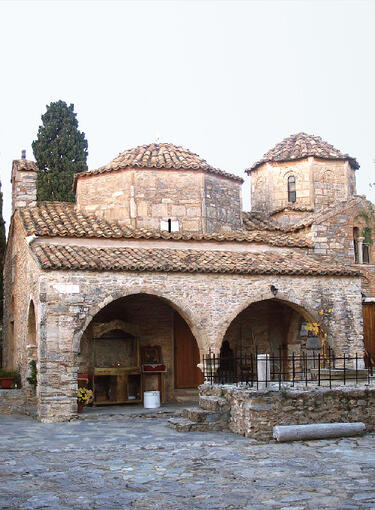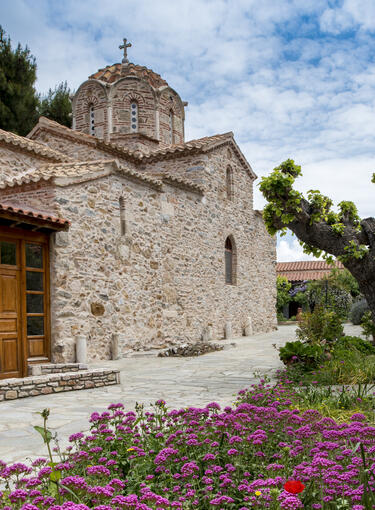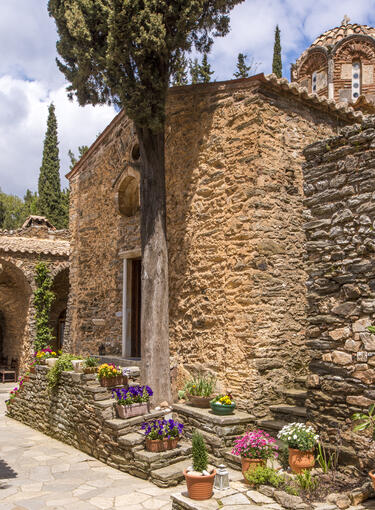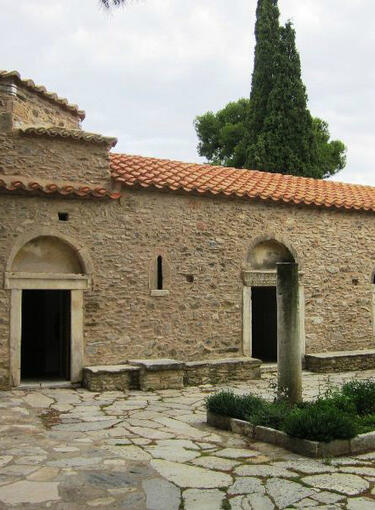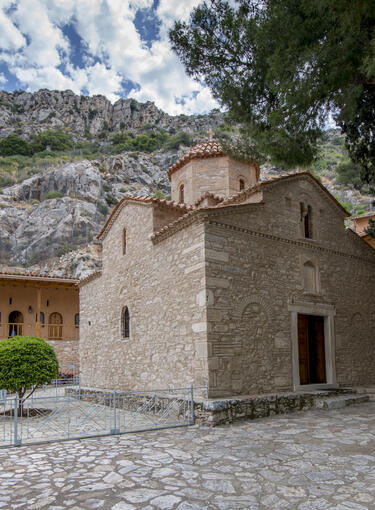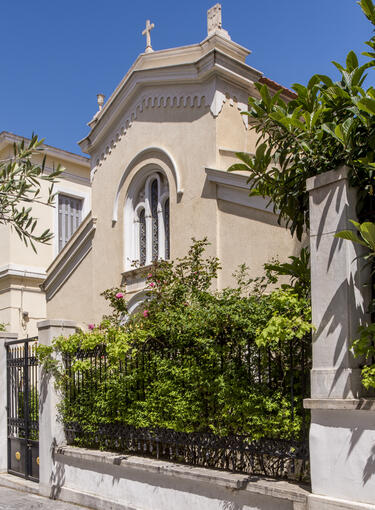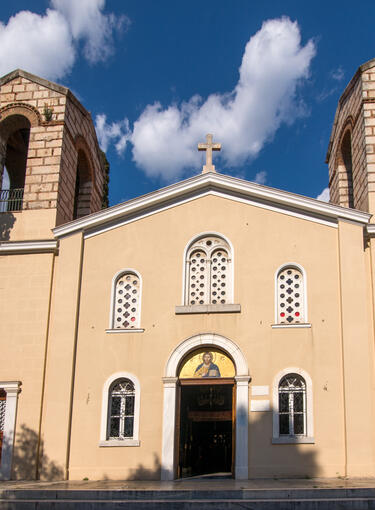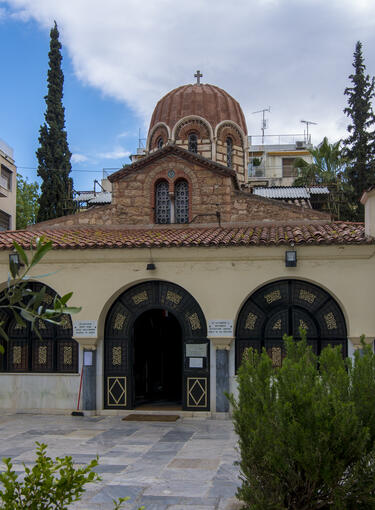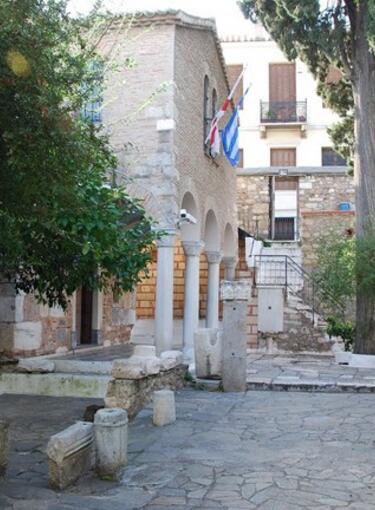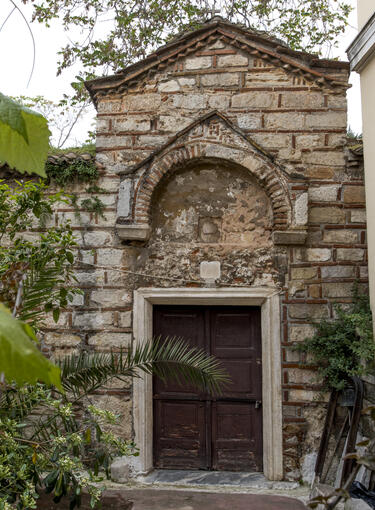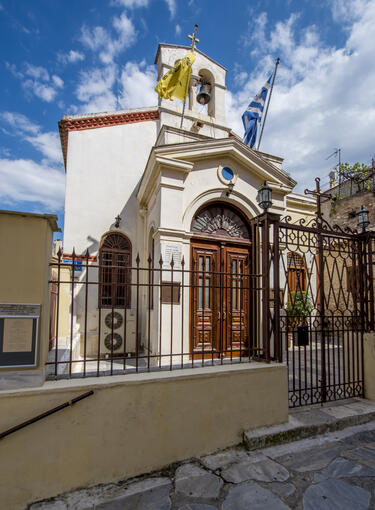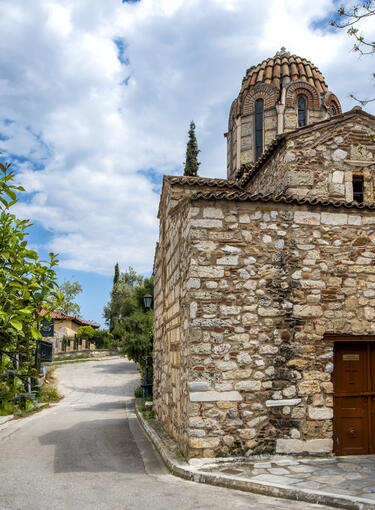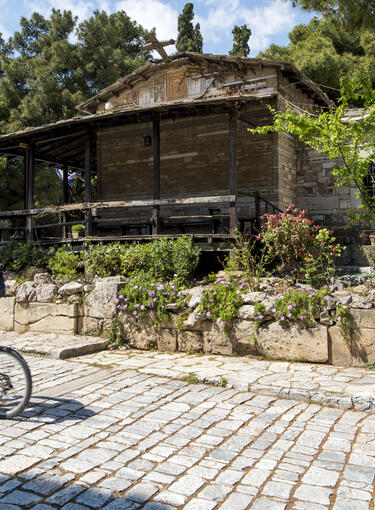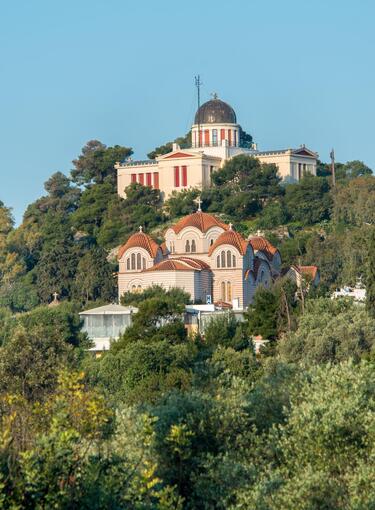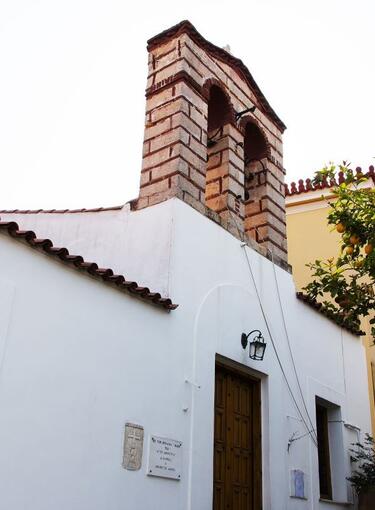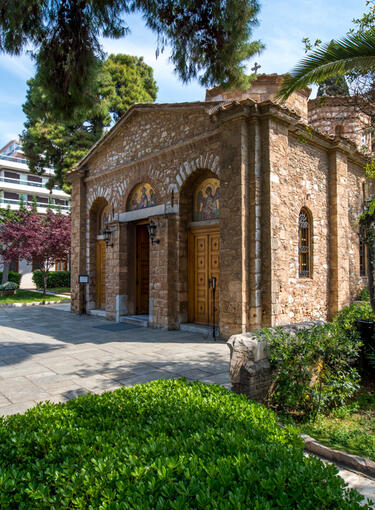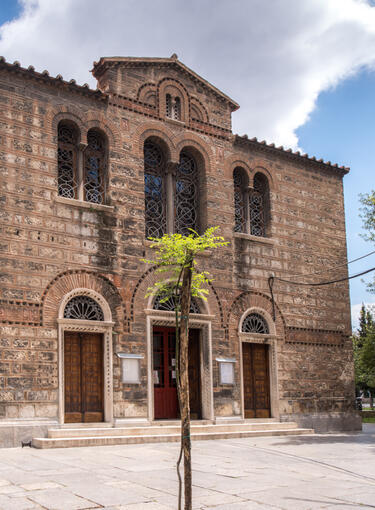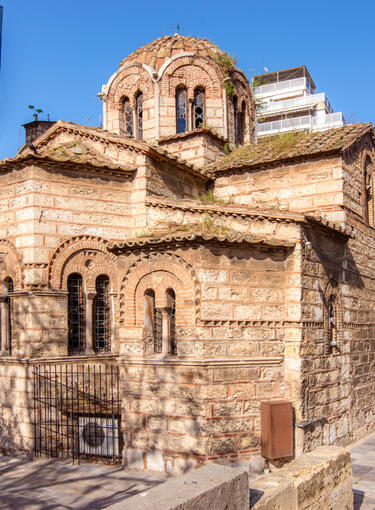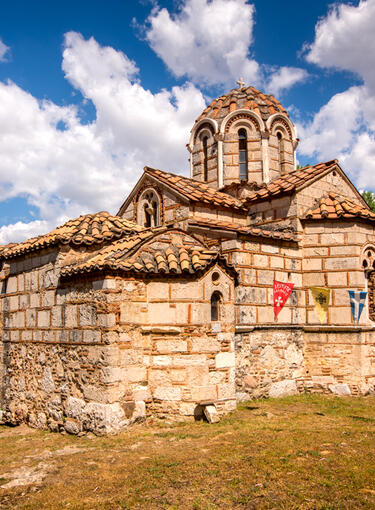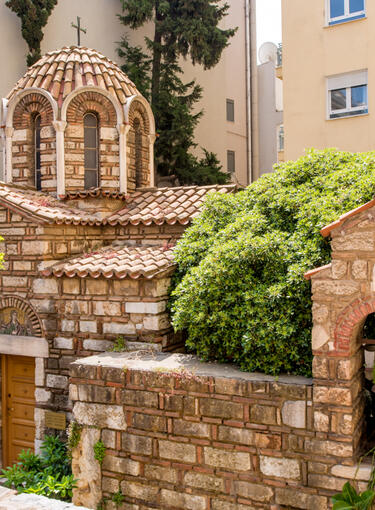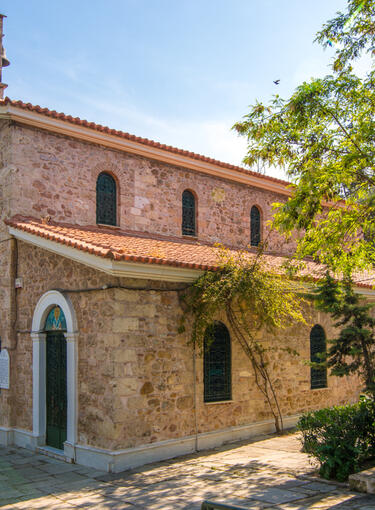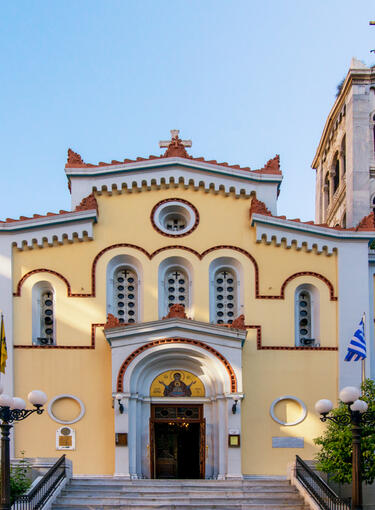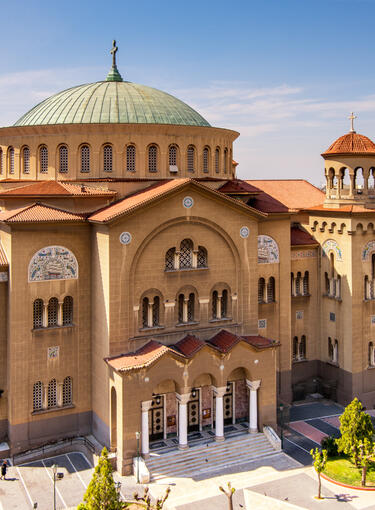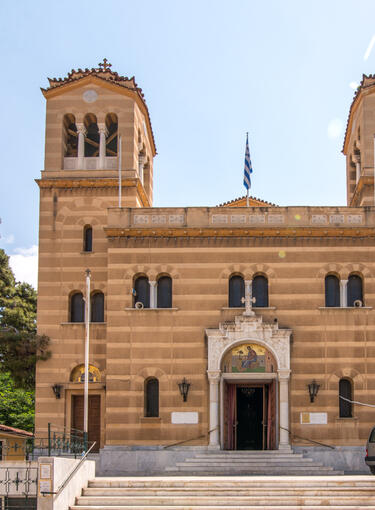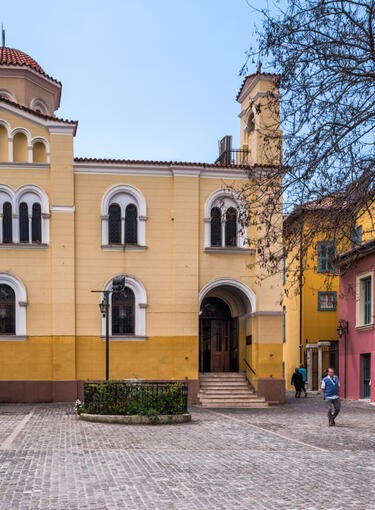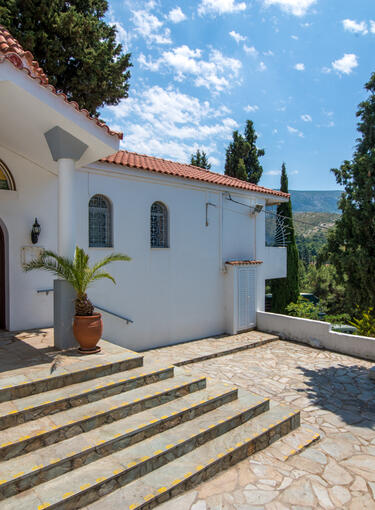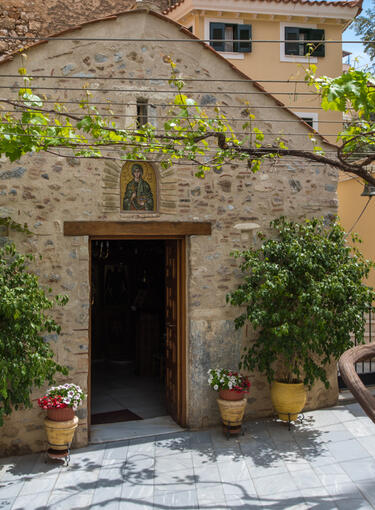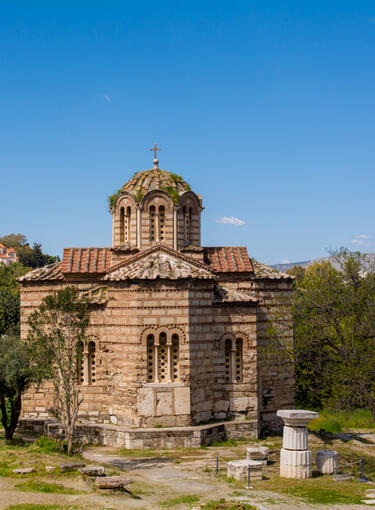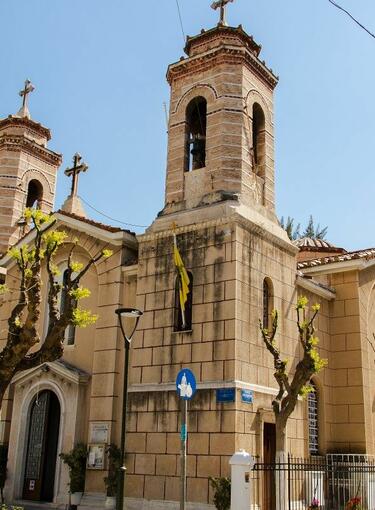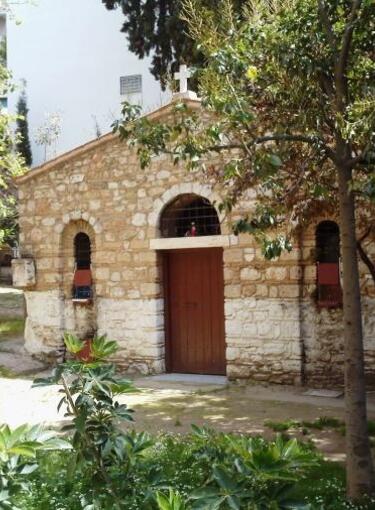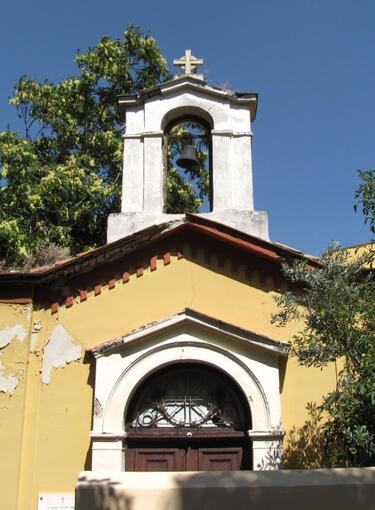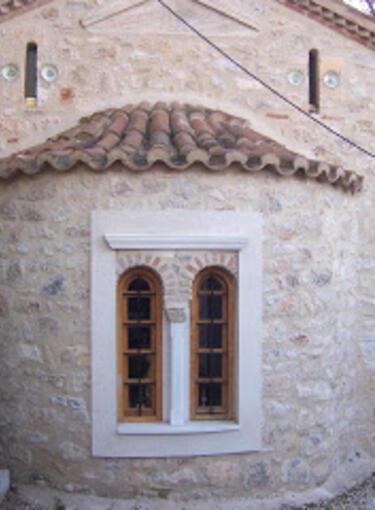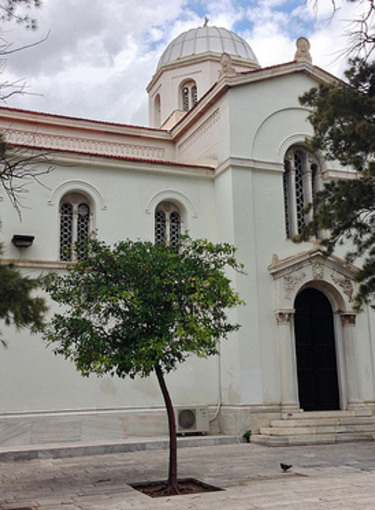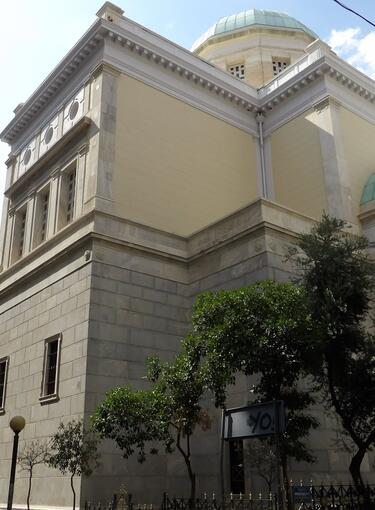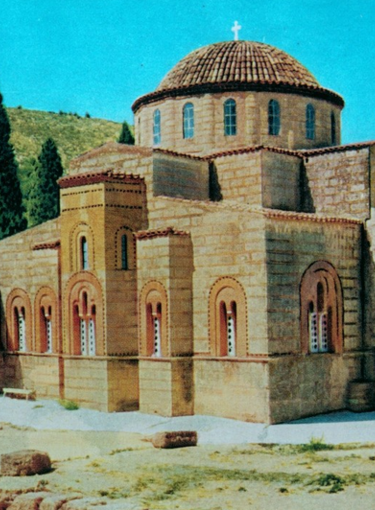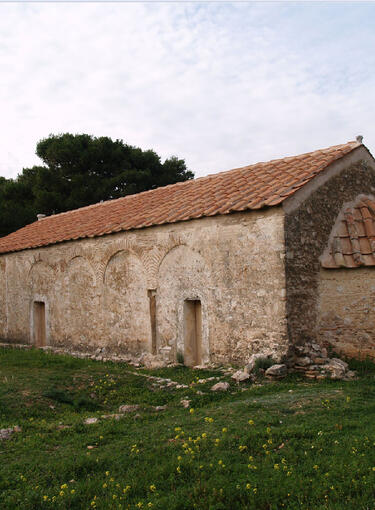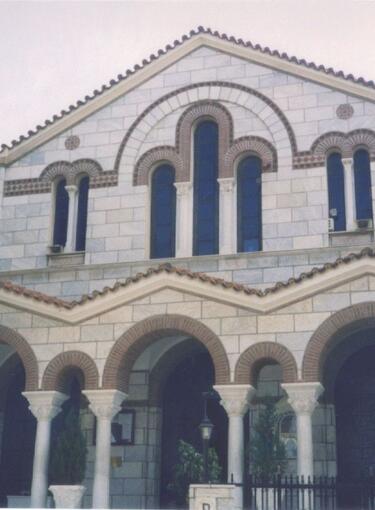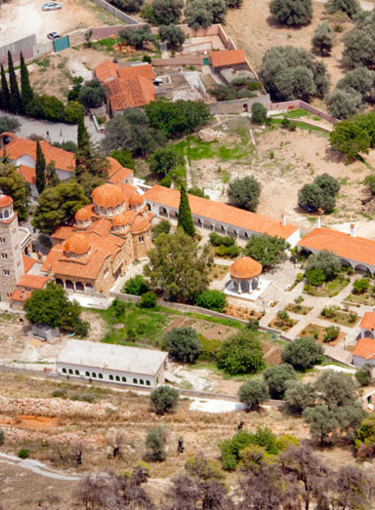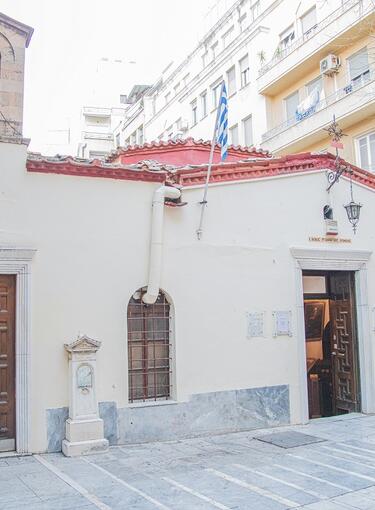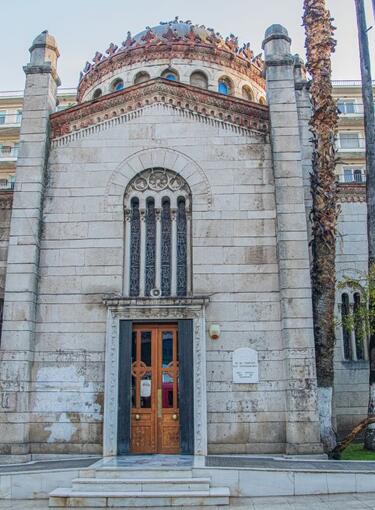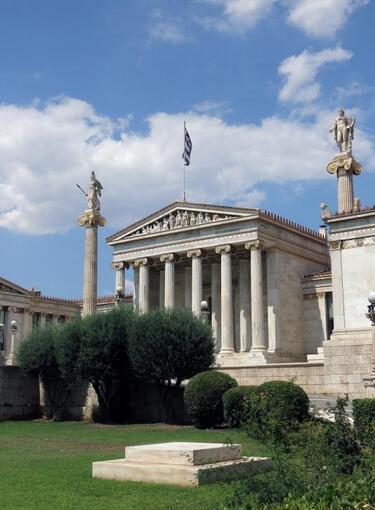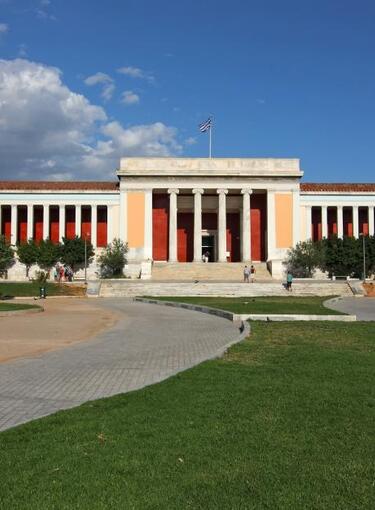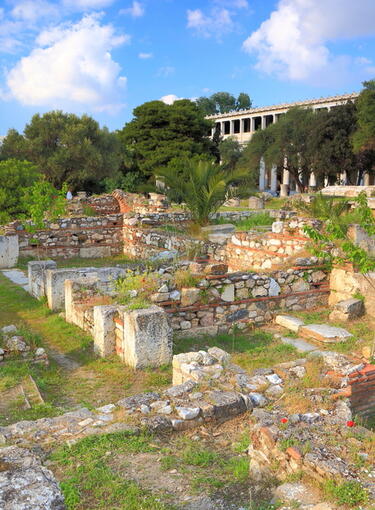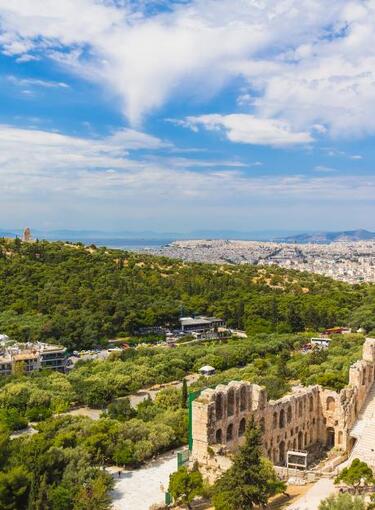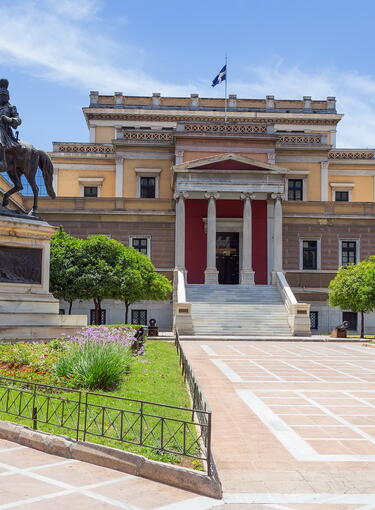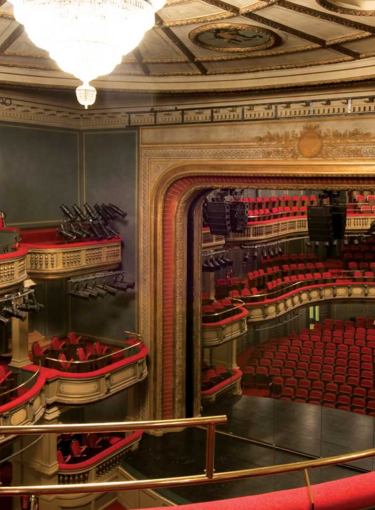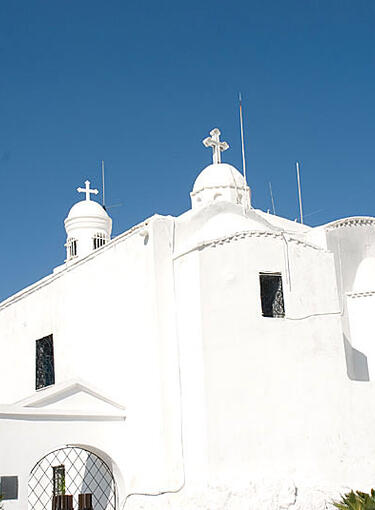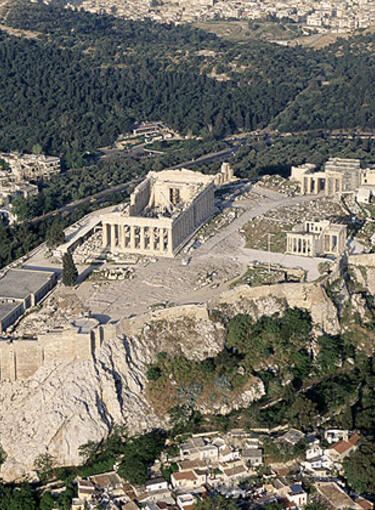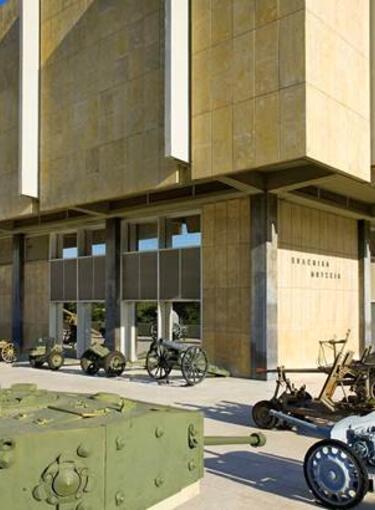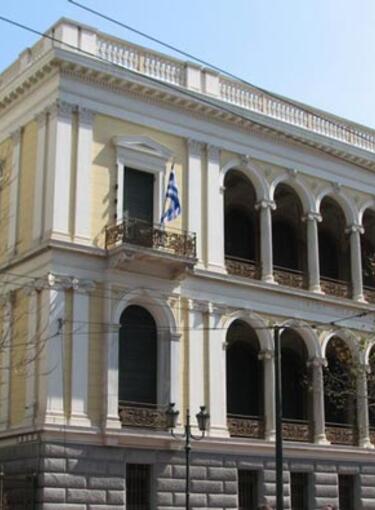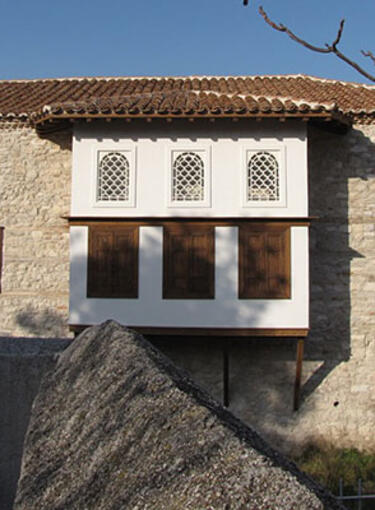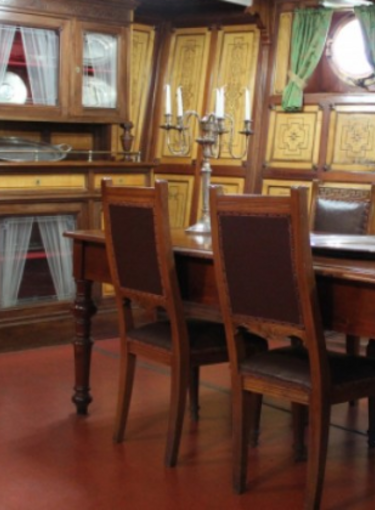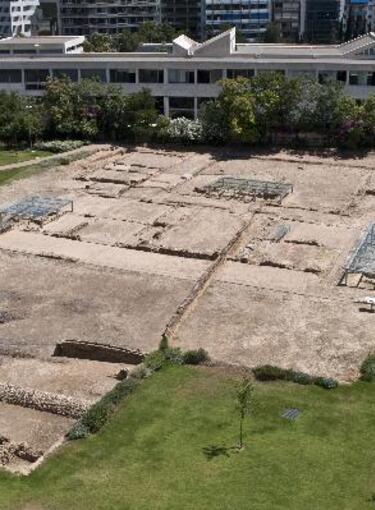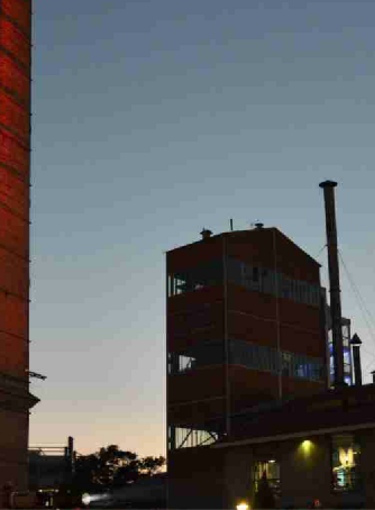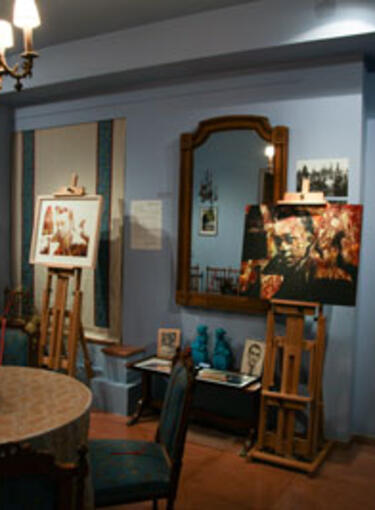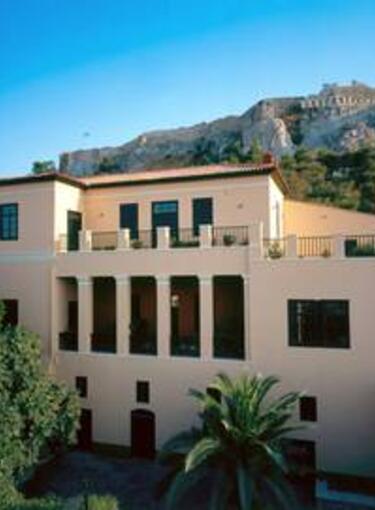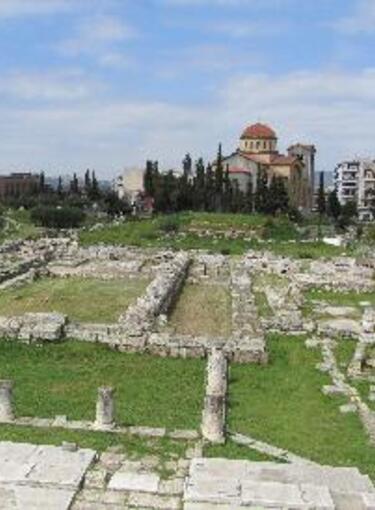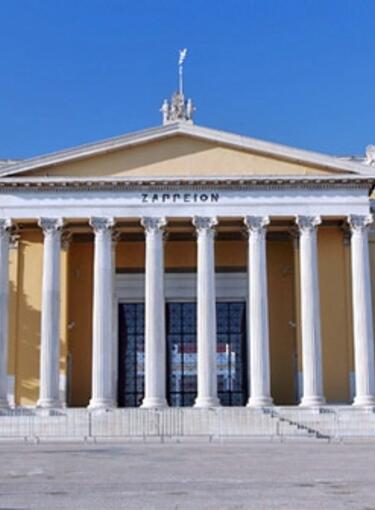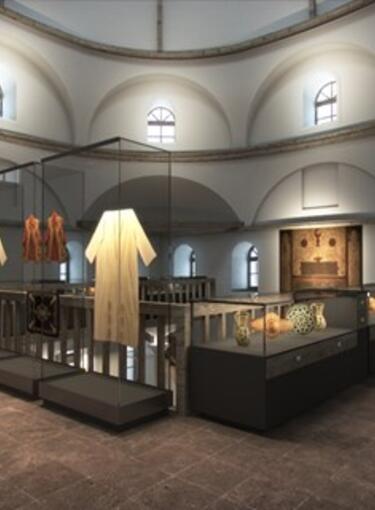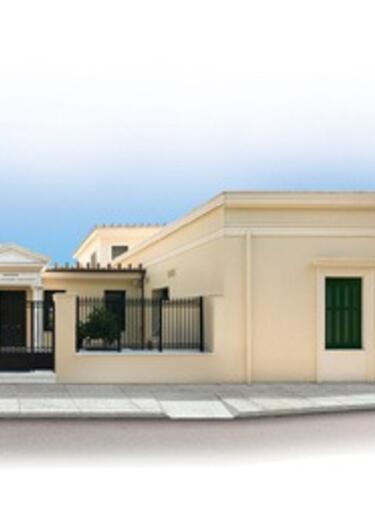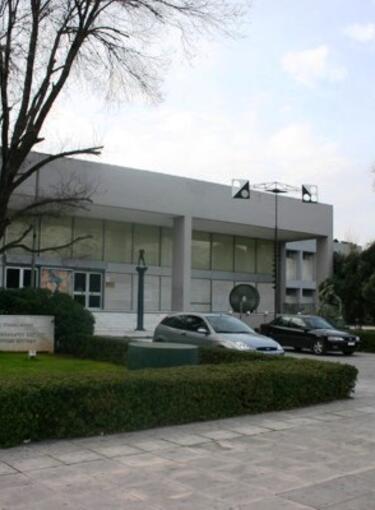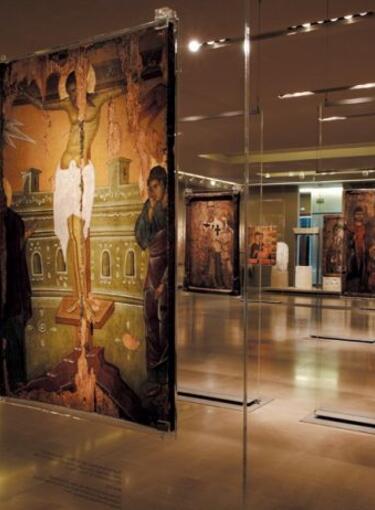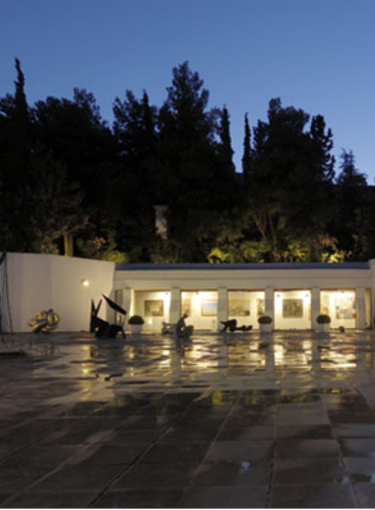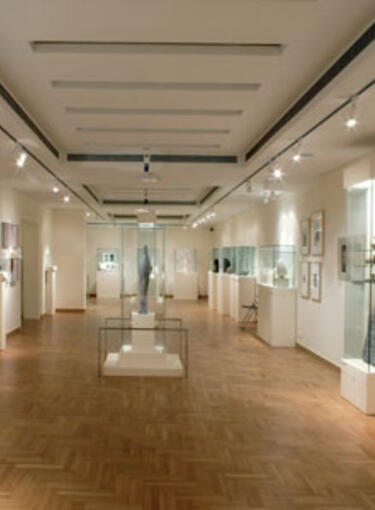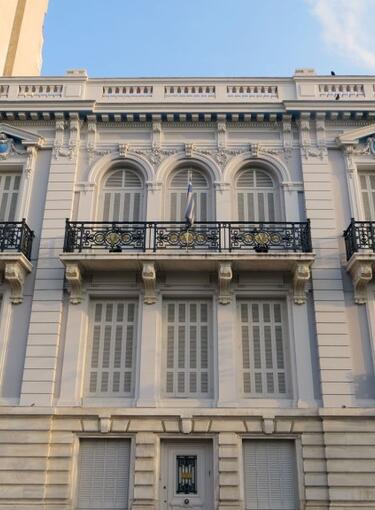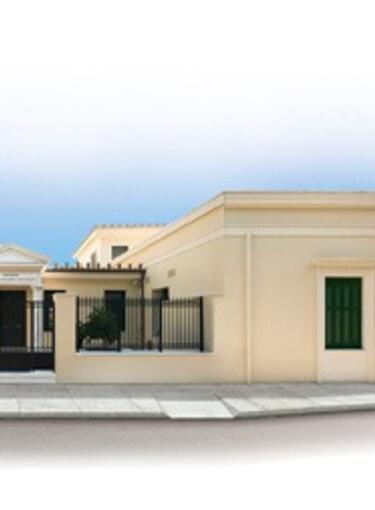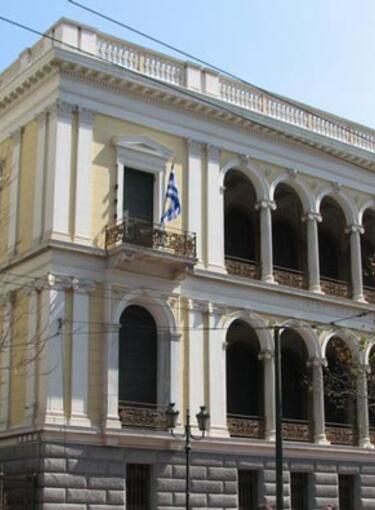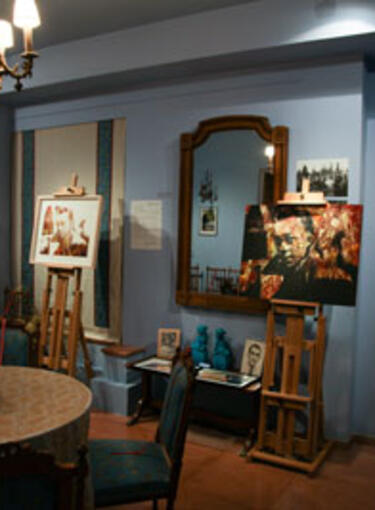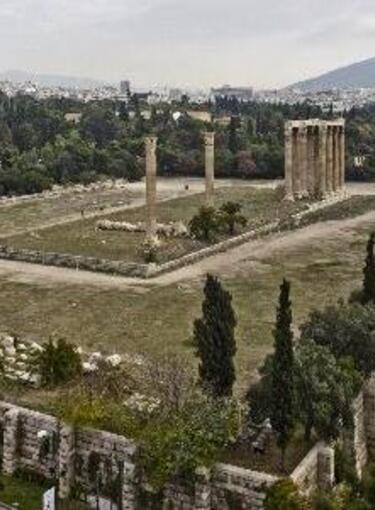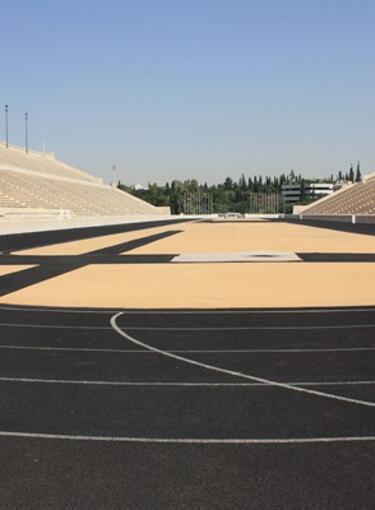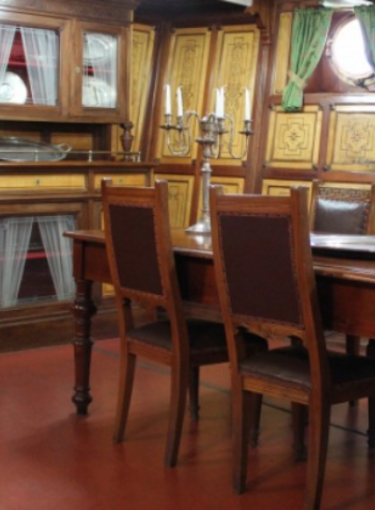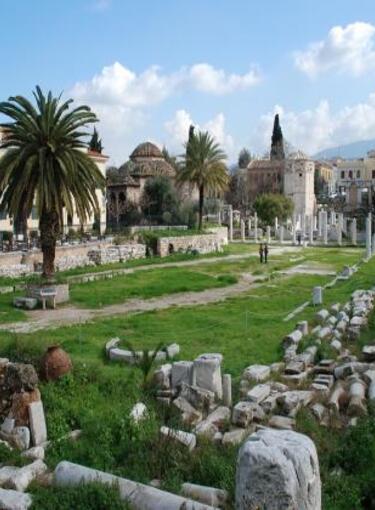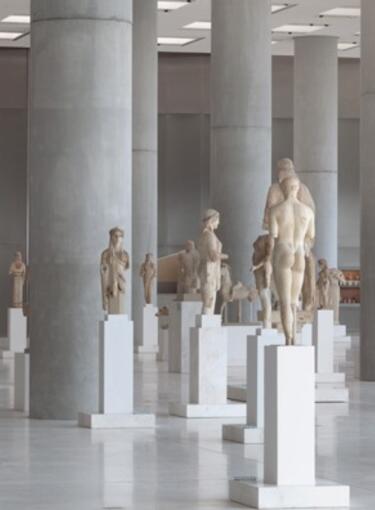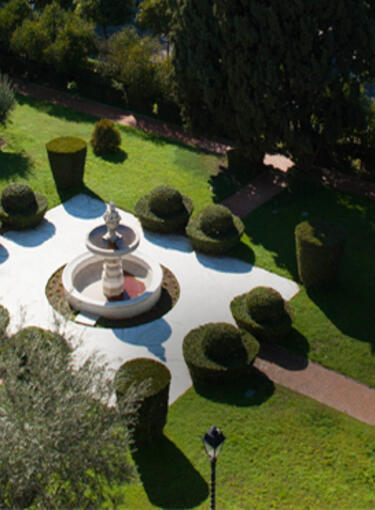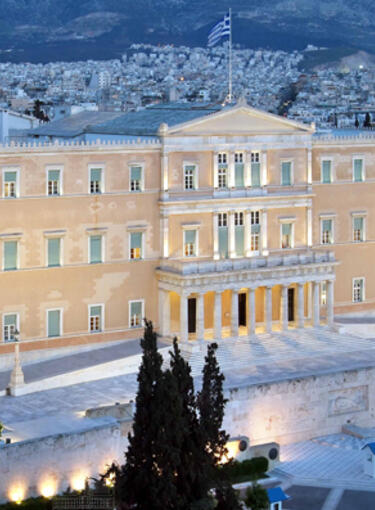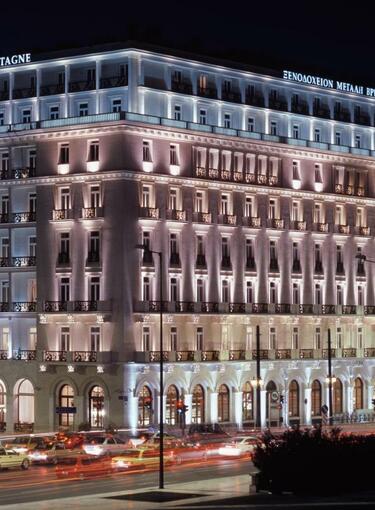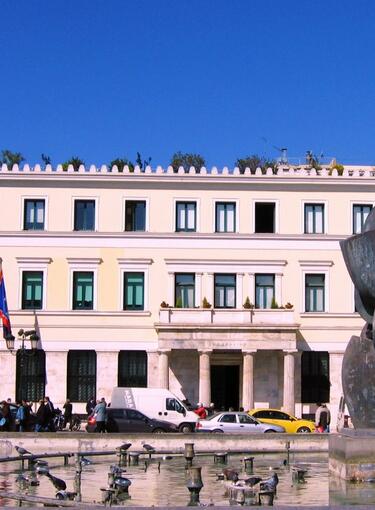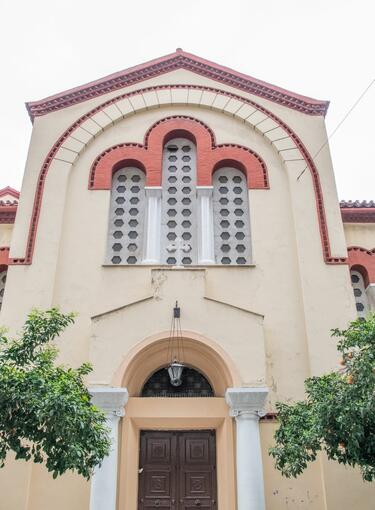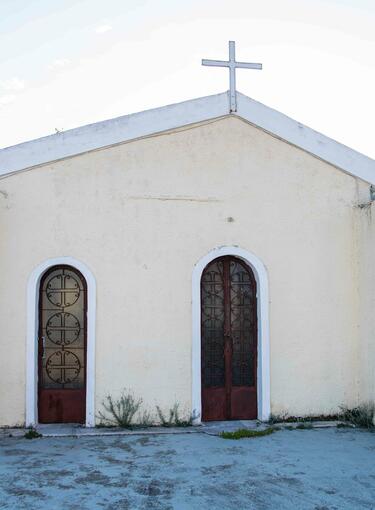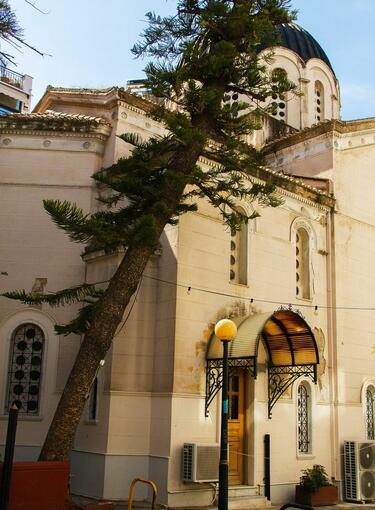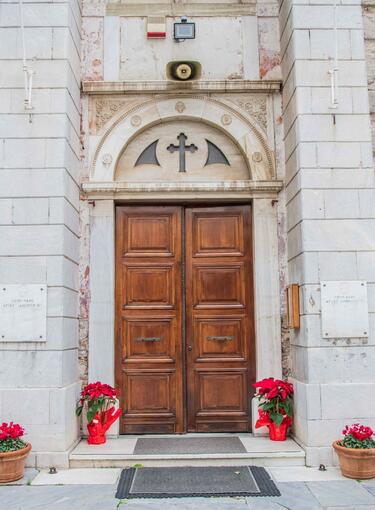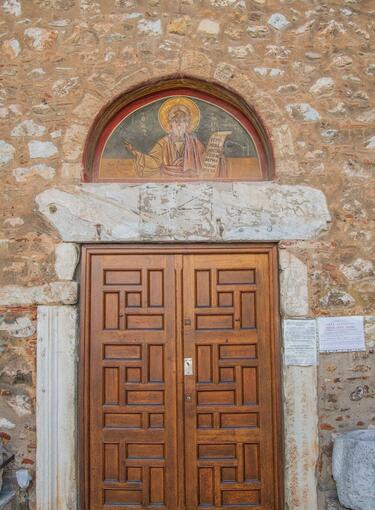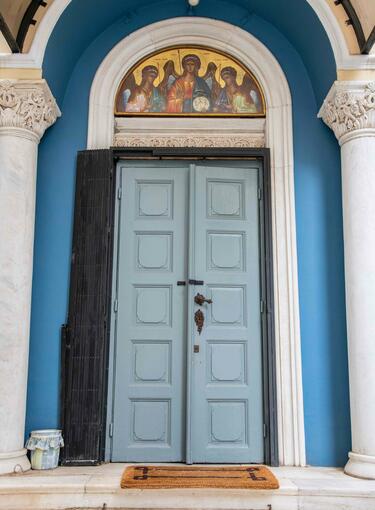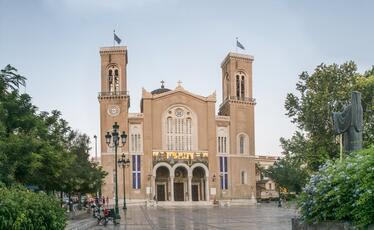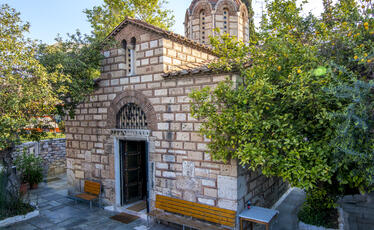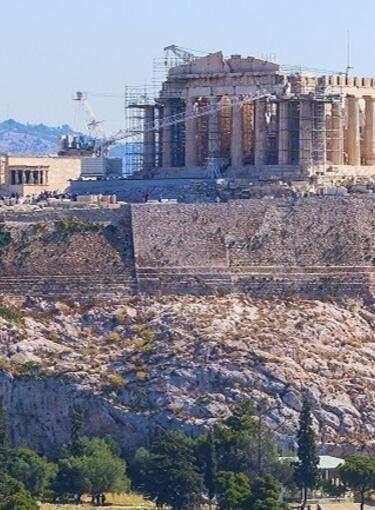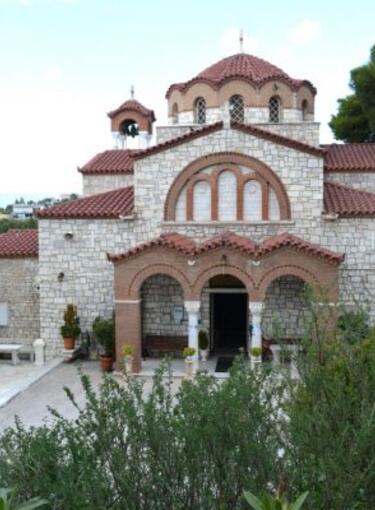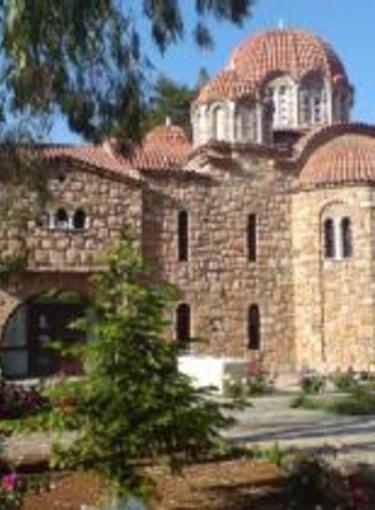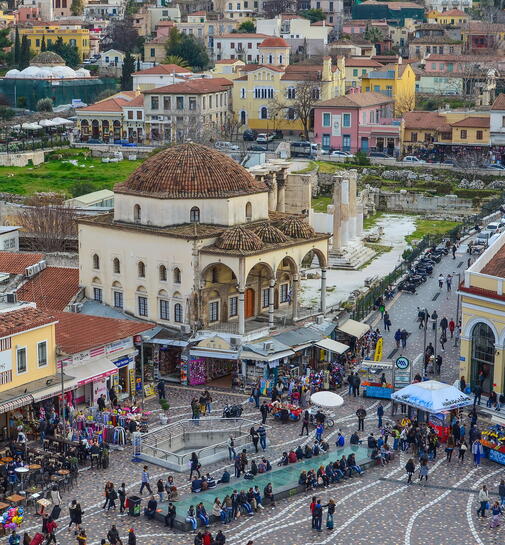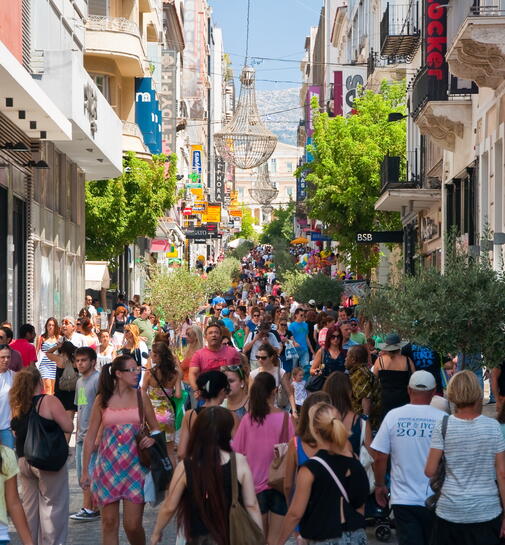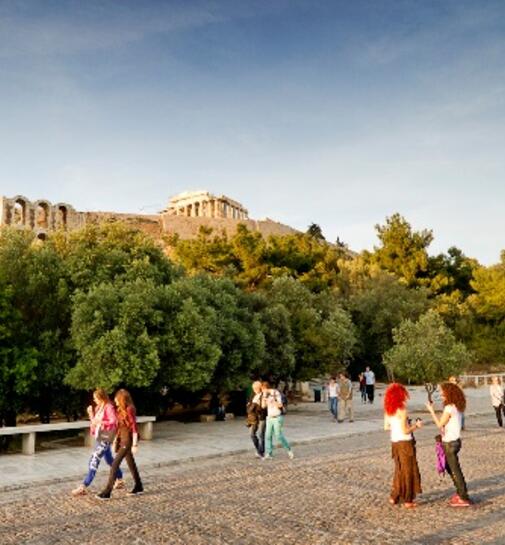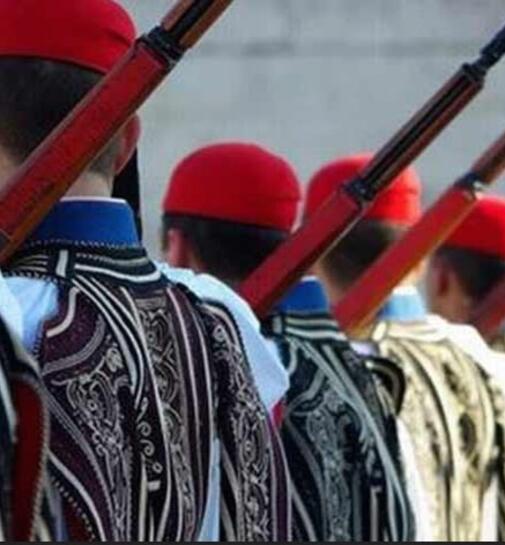Historic Temples
At the heart of Athens, at Mitropolis street, on the square with the same name, is the cathedral church of the city, dedicated to the Annunciation and it is one of the first large monument of Athens as the capital of Greece.
Its construction started in 1842 and it was completed with interruptions due to financial problems. It was inaugurated in 1862 and since then it proved to be a landmark in the history of the modern Greek state, because It hosted all the official ceremonies. The initial plans of the church, with gothic and renaissance elements, were made by the Danish architect Theophil Hansen, who has adapted them to the initial location where it was supposed to be erected, at Panepistimiou street, next to the Ophthalmiatreion. Based on these they have constructed the lower part of the buildings, while the upper part was completed by the architects Demetrios Zezos, main exponent of the “Greek-Byzantine” style, Francois Boulanger and Panagis Kalkos. From the end of the 19th and until the middle of the 20th century there were a lot of alterations and additions both to its interior and exterior, which changed its special initial form.
Architecturally the church belongs to the type of three-aisled basilica with a dome and is a combination of the neoclassical and the Greek-Byzantine style, something that is the result of the changes that occurred in the plans during its construction. They have used architectural material from 72 demolished churches of Athens and its impressive dome is covered externally by copper sheets. Its central entrance is emphasized by an arcade which is supported by Corinthian columns and pilasters, while the twin bell-towers show influences from western church architecture. The church’s interior is decorated with works of well-known artists of the 19th century. The wall paintings are the work of by the painters Spyridon Giallinas and Alexander Seitz, the decoration by Konstantinos Fanellis from Smyrna, while the sculptures are the work of Georgios Fytalis from Tinos.
At an underground crypt in the interior of the church, inside a marble reliquary is the shrine of the patriarch Gregory V and Agia Filothei of Athens.
Church of the Annunciation of Virgin Mary (Athens Cathedral)
One of the first monuments of the capital, a landmark monument for Athens is the holy Cathedral Church, dedicated to the Annunciation of Virgin Mary, the Holy Metropolis, whose erection constituted one of the most basic demands of the Autocephalous Orthodox Church but also of the then royal and municipal authority.
The construction of the church started in 1842 on the designs of the Danish architect Hansen, and yet some months later, owing to financial difficulties, the works ceased. In 1846 the work is being taken over by the architect Dimitrios Zezos. Zezos completely modified the Romano-Gothic and Renaissance original designs of Hansen, adopting a Greco-Byzantine style. He passed away, however, before having the opportunity to complete his work. Eventually, the French architect Francois Boulanger was summoned, who worked along with Panagiotis Kalkos for the completion of the church. These continual changes had as result the creation of a sacred monument, without a uniform architecture, a church combining neoclassical and Byzantine elements.
At the western side, on either side of the central entrance, loom the twin bell-towers alluding to Western mainly influences. They have a square floor plan with a height of 32 meters. At the level of the bells, one can observe, at the four sides, two–light openings which are supported by marble columns. 2. The central entrance impresses with the arcade of three arches supported on marble columns with luscious capitals. Over the arcade there is a large mosaic depiction.
Τhe architectural type of the church is a cruciform inscribed simple four–columned church and yet the especially long western leg, makes the church bear a greater semblance to a domed basilica. The dome of a diameter of approximately 10 meters externally is reveted with copper sheets and is supported, via the pendentives on four large piers. From the basis of the dome start the four semicircular barrel vaults of the cross arms.
The holy Bema is covered by the vault of the eastern cross arm. At the eastern side of the Sanctuary are formed three semicircular conchs. 3. In the central conch there is an elevated synthronon where the Episcopal thrones stand, carved in white marble. It is a bi-substantial church dedicated to the Annunciation and to Saint Dionysius the Areopagite.
Coated with marble is also the marvelous, built iconostasis. In the zone of the bishopric icons located are Archangel Michael on the gate of the Prothesis, the Annunciation, Virgin Mary, Jesus Christ, Saint John the Baptist, archangel Gabriel on the gate of the Diaconicon. Over this zone develops an architrave, with two rows of icons. On the lower row are situated circular busts of apostles and prophets, while the composition of the iconostasis is completed on the upper row with scenes from the Twelve Great Feasts. Four pilasters of red marble complete the highly luscious iconostasis. The Holy Gate is framed by columnettes of green Tinian marble. To the right and the left of the Holy Gate two double arches are formed, which are supported on columnettes of green marble.
Besides the impressive iconostasis, the entirety of the church has a rich marble decoration. Of special interest are the marble columns of the side aisles, as well as the luscious ambo with the marble carved corbels, a work by Georgios Fytalis.
Οf marble is also the floor of the Cathedral church. White marble with grey inlaid fasciae form a simple and tasteful composition.
In the underground level of the church there is a crypt, where two chapels are formed, of Saint Gregorios the 5th and Saint Philothei the Athenian. In the crypt is located a cruciform baptistery with two diametrically opposite descending stairs, an imitation of an early Christian baptistery, itself constructed also in its entirety of white marble.
The nave is exceptionally long. Besides the four piers of the dome there are also other two pairs of piers supporting the central barrel-vault as well as the gallery, which is formed over the side aisles and in the last narrower part of the nave forming a Pi shape.
The church is completely painted internally, and yet murals do not exist at all parts. On the dome hovers the Pantokrator and in the pendentives the four Evangelists. On the conch dominates the Platytera and in the lower zone Holy Hierarchs such as Dionysius of Egina, Dionysius the Areopagite, Hierotheus of Athens and Germanos of Constantinople. On the eastern piers of the dome one observes the depiction of the Annunciation in two parts. In the space of the exonarthex over the entrance gates, the two semicircular depictions with the Kiss of the Theotokos with Elizabeth and the Annunciation of the Theotokos, were painted in 1895 and were renovated in 1946.
In the church there are portable icons of unnamed, western style icon painters, while also religious relics are preserved, such as in the northern aisle, where the marble larnax of Patriarch Gregorios the 5th is kept, a work by Fytalis in designs of Kaftatzoglou.
Informations
Additional
Date:
1842-1862
Season:
Modern
Holy Metropolis:
Archdiocese of Athens
Address:
Mitropoleos Square
Access:
Metro (lines 1,2,3), Bus


